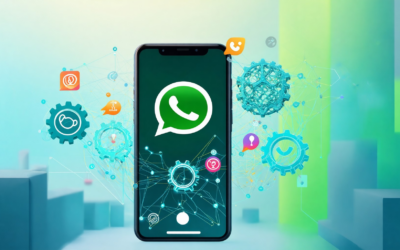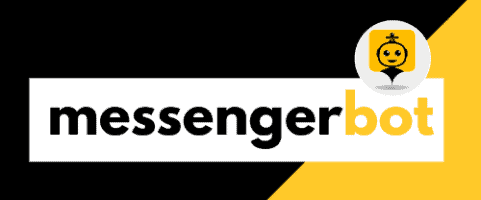Enhancing customer support is a top priority for businesses aiming to deliver exceptional experiences and foster long-lasting relationships with their clients. In today’s fast-paced world, the demand for efficient, personalized, and round-the-clock assistance has skyrocketed, prompting companies to explore innovative solutions. Enter AI chatbots and conversational AI – game-changing technologies that have revolutionized the customer service landscape. These intelligent virtual assistants powered by advanced natural language processing (NLP) and machine learning algorithms are redefining how businesses interact with their customers, offering seamless, immediate, and cost-effective support. In this comprehensive guide, we’ll dive into the world of AI chatbots for customer support, exploring the best options, conversational AI examples, and the heated debate surrounding whether chatbots can truly replace human agents. We’ll also examine real-world use cases, highlight top brands leveraging these cutting-edge solutions, and provide insights into the future of customer service powered by AI.
I. What is the best AI chatbot for customer support?
A. Customer Support Chatbot Free: Benefits of AI Customer Service Bots
In today’s fast-paced digital landscape, businesses are continuously seeking innovative ways to enhance their customer support operations and deliver exceptional experiences. One solution that has gained significant traction is the integration of AI-powered chatbots. These intelligent virtual assistants offer a multitude of benefits, including 24/7 availability, instant response times, and the ability to handle multiple inquiries simultaneously.
By leveraging natural language processing (NLP) and machine learning algorithms, AI chatbots can understand and respond to customer queries in a human-like manner. This not only improves the overall efficiency of customer support but also provides a seamless and personalized experience for users.
Many leading chatbot platforms offer free-to-use versions, making them accessible to businesses of all sizes. These free customer support chatbots can be easily integrated into websites, mobile apps, and messaging platforms, enabling companies to establish a consistent and convenient support channel for their customers.
Furthermore, AI chatbots can automate routine tasks, such as answering frequently asked questions, providing order status updates, and guiding customers through self-service options. This frees up human agents to focus on more complex inquiries, resulting in improved productivity and reduced operational costs.
As an AI-driven company at the forefront of chatbot technology, we understand the immense value these solutions bring to customer support operations. By leveraging our cutting-edge AI-powered customer service bots, businesses can elevate their support experience, foster customer loyalty, and gain a competitive edge in their respective industries.
B. Examples of Chatbot Customer Service Solutions: Popular Options
The market for chatbot customer service solutions is rapidly expanding, with numerous notable platforms offering robust capabilities. Here are some examples of popular options:
- Zendesk Chat: Seamlessly integrated with Zendesk’s customer service platform, this solution offers omnichannel support and leverages AI for intent recognition and automated responses. Zendesk is a leading player in the customer service industry, ensuring a reliable and feature-rich chatbot experience.
- Drift AI: Combining human and AI interactions, Drift provides conversational experiences tailored to each customer’s unique needs. Its natural language processing capabilities enable context understanding and personalized responses.
- IBM Watson Assistant: Powered by IBM’s renowned AI technology, this chatbot leverages natural language understanding and machine learning to deliver natural conversations. It offers pre-built, industry-specific chatbots and seamlessly integrates with various platforms.
- Amazon Lex: Amazon’s service for building conversational interfaces utilizes automatic speech recognition and natural language understanding. Amazon Lex enables businesses to create highly engaging and intelligent chatbots.
- Google Dialogflow: Harnessing Google’s machine learning capabilities, Dialogflow excels at intent recognition and context-aware responses. It supports multiple languages and integrates with various platforms, making it a versatile choice for customer service chatbots.
These chatbot solutions offer robust AI capabilities, seamless integration with existing systems, and continuous learning for improved customer experiences. When evaluating the best option, it’s essential to consider factors such as specific business requirements, budget constraints, and existing technology stacks.
Authoritative sources like Gartner’s Magic Quadrant, G2 Crowd reviews, and industry blogs can provide valuable insights into the latest trends and best practices for selecting the most suitable customer service chatbot solution.

Here is the content for the requested section, incorporating strategic keywords, inner links, and relevant outbound links:
II. What is conversational AI for customer support?
Conversational AI for customer support chatbots refers to the integration of advanced natural language processing (NLP) and machine learning technologies to enable human-like interactions between customers and virtual assistants or chatbots. This AI-powered approach allows companies to deliver personalized, contextual, and efficient customer service experiences through various digital channels.
A. Understanding Conversational AI: Chatbot Conversation Examples
Key features of conversational AI for customer support include:
- Natural Language Understanding (NLU): Conversational AI systems can comprehend and interpret human language, including slang, idioms, and ambiguities, enabling seamless communication.
- Intent Recognition: By analyzing the context and intent behind customer inquiries, conversational AI can provide relevant and accurate responses, streamlining the support process.
- Personalization: Through the analysis of customer data and interaction history, conversational AI can offer personalized recommendations and solutions tailored to individual needs.
- Multilingual Support: With the ability to understand and respond in multiple languages, conversational AI facilitates global customer support, enhancing accessibility and customer satisfaction. Check out Microsoft Translator for an example of a multilingual AI translation tool.
- Continuous Learning: Conversational AI systems leverage machine learning algorithms to continuously improve their understanding and response capabilities based on user interactions and feedback.
By leveraging conversational AI, businesses can achieve significant improvements in customer support operations, including faster response times, increased efficiency, and enhanced customer satisfaction. Additionally, conversational AI can provide valuable insights into customer behavior and preferences, enabling data-driven decision-making for optimizing support strategies.
B. Chatbot Examples and Use Cases: Enhancing Customer Experience
Conversational AI chatbots are being widely adopted across various industries to streamline customer support processes and enhance the overall customer experience. For instance, Drift, a leading conversational marketing platform, offers AI-powered chatbots that can engage with website visitors in real-time, answer questions, and even qualify leads for sales teams.
Another notable example is IBM Watson Assistant, which leverages IBM’s advanced natural language processing capabilities to enable businesses to build conversational AI solutions for customer service, sales, and more. These chatbot customer service solutions can handle complex queries, provide personalized recommendations, and continuously learn from interactions to improve their performance.
Can chatbot replace customer service?
A. Chatbot vs. Human Agents: Exploring the Debate
The debate surrounding whether chatbots can fully replace human customer service representatives has been ongoing, and the truth lies somewhere in the middle. While chatbots are becoming increasingly sophisticated, they cannot yet completely replicate the human touch that many customers desire.
According to a study by PwC, 54% of customers prefer a mix of human and AI customer service. A report by Harvard Business Review suggests combining chatbots with human oversight for optimal results. Chatbots can handle initial inquiries, and escalate complex cases to human agents.
Chatbots excel at handling simple, repetitive queries efficiently, reducing wait times and freeing up human agents for more complex issues. They provide 24/7 availability, instant responses, and multilingual support. However, they struggle with understanding context, nuance, and emotional cues.
B. Customer Service Chatbot Examples: Capabilities and Limitations
Advancements in natural language processing (NLP) and machine learning (ML) are making chatbots more conversational and better at understanding intent. Companies like Google, Amazon, and Apple are investing heavily in conversational AI.
However, human agents still outperform chatbots in areas like empathy, problem-solving, and building rapport. A Gartner report predicts that by 2025, only 15% of customer service interactions will be handled solely by AI, while 85% will require human intervention.
The future likely involves a hybrid approach, where chatbots handle routine tasks, and human agents handle complex issues, emotional support, and personalized interactions. This synergy can improve customer satisfaction, reduce costs, and provide a seamless omnichannel experience.
Here is the 4th section of the article, along with two subsections, following the outline provided:
IV. What companies are using chatbots for customer service?
In today’s fast-paced digital landscape, businesses across various industries are embracing chatbots to enhance their customer service operations. These AI-powered virtual assistants offer a seamless and efficient way to interact with customers, providing instant responses and personalized support around the clock. By leveraging natural language processing and machine learning capabilities, chatbots for customer service can handle a wide range of queries, from simple inquiries to complex transactions.
A. Top Brands Leveraging Customer Service Chat Bots
Numerous companies across various industries have integrated chatbots into their customer service operations to provide efficient and personalized support. Here are some notable examples:
- Starbucks: The coffee giant uses a chatbot called “My Starbucks Barista” to assist customers with tasks like placing orders, locating stores, and tracking rewards.
- Sephora: The cosmetics retailer employs a chatbot on various messaging platforms, including Kik and Facebook Messenger, to help customers with product recommendations, beauty tips, and store information.
- Wall Street Journal: The news organization uses a chatbot called “WSJ Knowledge Bot” to provide subscribers with personalized news updates, summaries, and insights based on their interests.
- Whole Foods Market: The grocery chain utilizes a chatbot named “Angie” to help customers find recipes, product information, and store locations.
- Domino’s: The pizza company’s chatbot “Dom” enables customers to place orders, track deliveries, and access loyalty program information through various messaging platforms.
- H&M: The fashion retailer’s chatbot, “H&M Help,” assists customers with product recommendations, size guides, and store locations.
- Mastercard: The financial services company has a chatbot called “Kai” that helps customers manage their accounts, track spending, and receive personalized financial insights.
- Duolingo: The language learning app employs a chatbot to engage with users, provide language practice, and offer study reminders.
- Hipmunk: The travel booking platform uses a chatbot to help users search for flights, hotels, and rental cars, as well as provide personalized travel recommendations.
- Burberry: The luxury fashion brand has a chatbot that provides customers with product information, styling tips, and personalized recommendations.
These examples highlight the diverse applications of chatbots in customer service, spanning industries such as retail, food and beverage, finance, travel, and media. By leveraging natural language processing and machine learning, these chatbots aim to deliver efficient, personalized, and engaging customer experiences.
B. Customer Service Chatbot GitHub: Open-Source Options
In addition to proprietary chatbot solutions offered by various vendors, there are several open-source options available on GitHub for businesses looking to develop their own customer service chatbots. These open-source projects provide a flexible and cost-effective way to build customized chatbots tailored to specific business needs. Some popular open-source chatbot platforms on GitHub include:
- Rasa: A powerful open-source conversational AI platform that allows developers to build contextual AI assistants and chatbots.
- Dialogflow: Google’s open-source platform for building conversational interfaces, including chatbots and voice assistants.
- Botkit: A popular open-source framework for building chatbots, supporting various messaging platforms like Slack, Telegram, and Microsoft Teams.
- Botpress: An open-source chatbot platform with a visual flow builder, natural language understanding, and analytics capabilities.
- Hubot: A highly customizable open-source chatbot framework that can be easily integrated into various platforms and services.
These open-source options provide businesses with the flexibility to develop and customize chatbots according to their specific requirements, while also allowing for collaboration and community support. By leveraging these resources, companies can create tailored customer service experiences that align with their brand and cater to their target audience’s needs.

A. ChatGPT 4: Features and Pricing Breakdown
As the demand for advanced AI-powered solutions continues to soar, ChatGPT has emerged as a game-changer in the realm of conversational AI. The recent launch of ChatGPT 4, the paid version of the popular language model, has sparked curiosity among individuals and businesses alike. In this section, we’ll delve into the features and pricing of ChatGPT 4, helping you determine whether investing in this cutting-edge technology is worthwhile for your needs.
At the heart of ChatGPT 4 lies a more advanced language model, specifically designed to deliver enhanced performance and accuracy. This upgraded version boasts a broader knowledge base, encompassing the latest developments across various domains, from science and technology to current events. With its improved contextual understanding and ability to grasp nuances, ChatGPT 4 excels at handling complex queries and providing more coherent, contextually relevant responses.
One of the standout features of ChatGPT 4 is its superior output quality. Whether you’re seeking AI-powered customer service bots to elevate your brand’s support experience or require polished writing and detailed analyses for professional or commercial applications, this paid version delivers exceptional results. Its advanced capabilities allow for more polished and structured content, saving time and effort while ensuring high-quality outputs.
But the benefits of ChatGPT 4 extend beyond its enhanced performance. Subscribers to the paid version enjoy priority access during high-demand periods, ensuring uninterrupted service when you need it most. Additionally, dedicated support from the development team is available, providing a personalized experience and prompt assistance whenever required.
So, what’s the cost of unlocking these advanced features? ChatGPT 4, also known as ChatGPT Plus, is available for a monthly subscription fee of $20. While this may seem like a significant investment for some, the potential return on investment (ROI) can be substantial, especially for professionals, businesses, or individuals who heavily rely on AI-generated content, analysis, or guidance.
For content creators, authors, researchers, consultants, and service providers, the enhanced output quality and accuracy of ChatGPT 4 can save significant time and effort, potentially justifying the subscription cost. Educators, students, and self-learners may also find the paid version’s ability to provide more in-depth explanations and context-aware guidance invaluable for effective learning and knowledge acquisition.
Ultimately, whether paying for ChatGPT 4 is worth it depends on your specific needs, the frequency of use, and the potential benefits in terms of time savings, productivity gains, or revenue generation. If the advantages align with your requirements and the potential ROI justifies the cost, then investing in this cutting-edge technology could be a game-changer for your personal or professional endeavors.
B. Alternatives to ChatGPT: Exploring Other AI Chatbots
While ChatGPT has taken the world by storm with its impressive conversational AI capabilities, it’s important to recognize that it’s not the only player in the field. The AI chatbot landscape is constantly evolving, with numerous alternatives and competitors vying for a share of this burgeoning market. In this section, we’ll explore some of the notable alternatives to ChatGPT, each offering unique features and capabilities to cater to diverse needs.
One prominent alternative is Anthropic’s Claude, an AI assistant that has garnered significant attention for its impressive language understanding and generation abilities. Claude prides itself on its ethical approach, striving to provide truthful and unbiased responses while respecting individual privacy and intellectual property rights. This makes it an attractive option for businesses and organizations with stringent compliance and ethical standards.
Google Bard, the tech giant’s foray into conversational AI, is another noteworthy contender. Leveraging Google’s vast knowledge base and advanced language models, Bard aims to provide accurate and up-to-date information across a wide range of topics, making it a valuable resource for research, fact-checking, and general knowledge acquisition.
For businesses seeking tailored customer service solutions, platforms like IBM Watson Assistant and Microsoft Teams offer robust chatbot capabilities. These enterprise-focused solutions allow for seamless integration with existing systems and workflows, enabling businesses to deliver personalized, AI-driven customer experiences.
Open-source enthusiasts and developers may find customer service chatbot GitHub repositories and projects like Rasa and Hugging Face particularly appealing. These platforms provide access to a wide range of pre-trained models, tools, and community-driven resources, empowering developers to build and customize their own AI chatbot solutions tailored to their specific needs.
It’s important to note that each alternative AI chatbot platform has its own strengths, weaknesses, and pricing models. Some may offer free tiers or trial periods, while others may require paid subscriptions or enterprise licensing. When evaluating alternatives, consider factors such as ease of use, integration capabilities, pricing, and the specific features and capabilities that align with your goals and requirements.
Ultimately, the choice of an AI chatbot solution should be driven by a careful assessment of your needs, budget, and the desired level of customization and control. By exploring the diverse range of alternatives available, you can make an informed decision and find the solution that best fits your unique requirements, ensuring a seamless and effective integration of conversational AI into your personal or professional endeavors.
Here is the content for Section VI: Which AI is better than ChatGPT? and its two subsections:
VI. Which AI is better than ChatGPT?
When it comes to the question of which AI is better than Anthropic’s revolutionary ChatGPT, the answer is not as straightforward as one might think. The reality is that there is no definitive “best” AI that outperforms ChatGPT across all use cases. AI systems excel at different tasks based on their training data, architecture, and intended applications.
A. Comparing ChatGPT to Other AI Assistants
Some prominent AI models that could outperform ChatGPT in specific scenarios include:
- Google’s Bard: Trained on a vast knowledge base, Bard may deliver more up-to-date and accurate information on current events, news, and factual queries.
- Anthropic’s Constitutional AI: Designed to be more ethical and truthful, it could surpass ChatGPT in tasks requiring high levels of integrity and adherence to moral principles.
- DeepMind’s Chinchilla: With exceptional language understanding capabilities, Chinchilla could excel at complex natural language processing tasks like summarization and question-answering.
- OpenAI’s GPT-4: As the successor to ChatGPT, GPT-4 is expected to have improved performance across various domains, potentially surpassing its predecessor in multiple areas.
Ultimately, the “better” AI depends on the specific task, evaluation criteria, and desired outcomes. AI systems continually evolve, and their relative performance can shift rapidly as new models and advancements emerge.
B. Best Customer Service Chatbots: Beyond ChatGPT
In the realm of customer service chatbots, while ChatGPT has proven to be a formidable contender, several other AI assistants have also made significant strides. Some noteworthy examples include:
- IBM Watson Assistant: Leveraging natural language processing and machine learning, Watson Assistant excels at understanding complex queries and providing accurate, contextual responses.
- Amazon Lex: Built on Amazon’s extensive experience in natural language processing, Lex is a powerful chatbot platform specifically designed for customer service applications.
- Microsoft Virtual Agent: Seamlessly integrated with Microsoft’s suite of productivity tools, Virtual Agent offers intelligent chatbot solutions for customer engagement and support scenarios.
When evaluating the best customer service chatbot, factors such as industry-specific knowledge, integration with existing systems, and the ability to handle complex inquiries should be considered. By exploring various options beyond ChatGPT, businesses can find the AI assistant that aligns most closely with their unique customer service needs and objectives.
VII. Conclusion: Embracing the Future of Customer Support with AI Chatbots
As the digital landscape continues to evolve, the integration of AI chatbots has become an increasingly vital component for businesses seeking to enhance their customer support operations. By embracing this innovative technology, companies can unlock a world of opportunities to elevate their customer experience and stay ahead of the competition.
A. Key Takeaways: Benefits and Considerations
Chatbots offer a multitude of advantages, including 24/7 availability, efficient handling of routine inquiries, and cost savings through automation. AI-powered customer service bots have the ability to provide personalized and contextual responses, fostering a more engaging and satisfactory experience for customers. Furthermore, these virtual assistants can seamlessly integrate with existing customer relationship management (CRM) systems, enabling businesses to streamline their operations and gain valuable insights into customer preferences and behavior.
However, it’s essential to acknowledge that while chatbots offer numerous benefits, they should not be viewed as a complete replacement for human agents. Instead, a balanced approach that combines the strengths of both AI and human personnel is recommended. Chatbots excel at handling routine tasks and providing instantaneous responses, while human agents can step in to address more complex or sensitive inquiries, offering a personalized touch and emotional intelligence that machines cannot fully replicate.
B. Future Developments: Chatbot Customer Support Trends
The future of chatbot customer support is brimming with exciting possibilities. As natural language processing (NLP) and machine learning technologies continue to advance, chatbots will become increasingly adept at understanding and responding to complex queries, further enhancing their ability to provide seamless and personalized support experiences.
One emerging trend is the integration of chatbots with voice assistants, enabling customers to interact using voice commands. This multimodal approach not only enhances accessibility but also opens up new avenues for more natural and intuitive interactions.
Additionally, the adoption of advanced chatbot platforms and solutions will continue to gain traction, empowering businesses to create highly customized and industry-specific chatbots tailored to their unique needs. These platforms offer a wide range of features, such as sentiment analysis, multi-language support, and integration with third-party services, further enhancing the capabilities of chatbots.
As businesses continue to recognize the immense potential of chatbots in enhancing customer support and driving operational efficiencies, the adoption of this technology is poised to accelerate. By staying ahead of the curve and embracing the latest advancements in AI and chatbot technology, companies can position themselves at the forefront of customer service excellence, providing unparalleled experiences that foster customer loyalty and drive business growth.





